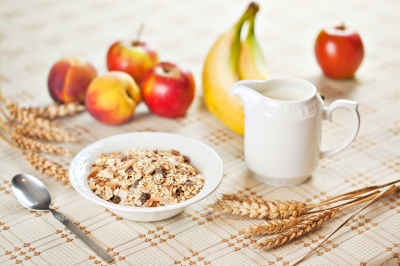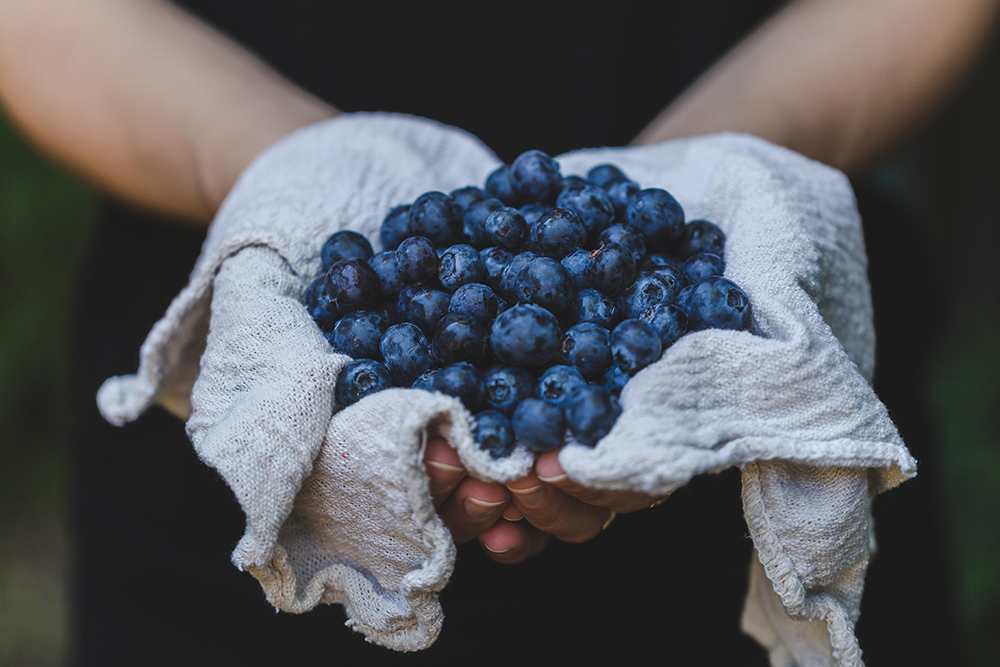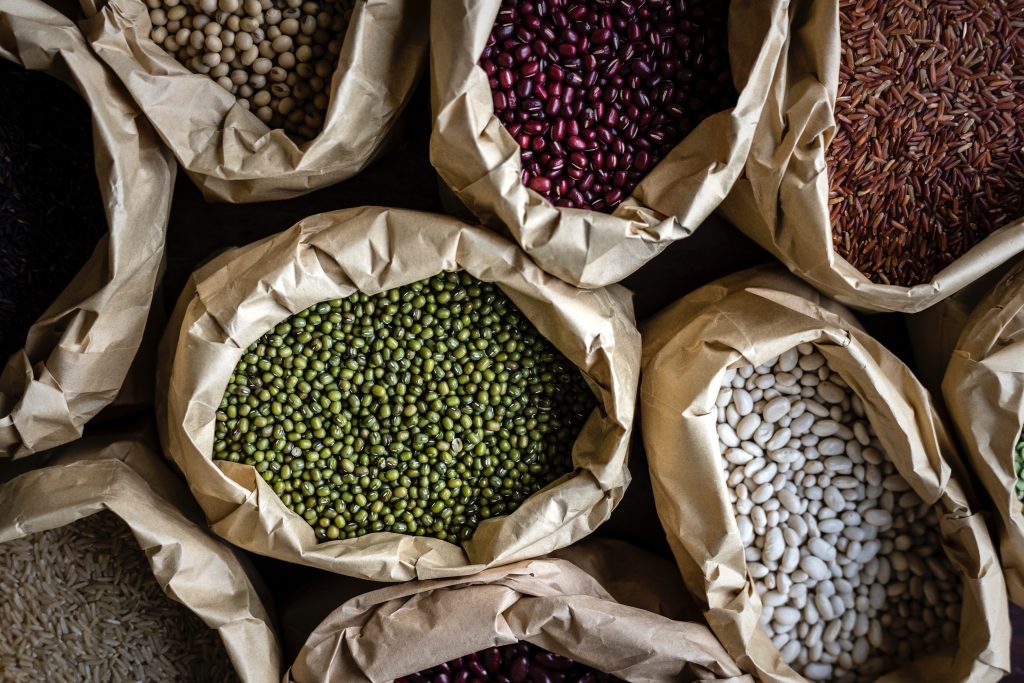4 Reasons Why You Need More Fiber
 How many grams of fiber do you consume daily?
How many grams of fiber do you consume daily?
Most Americans consume half the recommended dietary intake of 25 grams (women) to 38 grams (men) of fiber daily for adults 50 years or younger. Over the age of 50, women should consume 21 grams of fiber and men 30 grams per day.
There are two types of fiber.
Soluble fiber turns to a gel during digestion. Sources of soluble fiber include oats, oatmeal, nuts, seeds, beans, peas, lentils, and some fruits and vegetables (i.e. oranges, apples, carrots).
Insoluble fiber is not digested. It adds bulk to the stool and helps food move through the stomach and intestines. Sources of insoluble fiber include vegetables, whole-grains, and wheat bran.
A diet high in fiber is connected to many health benefits.
- Lower cholesterol levels
Boosting fiber intake from whole-grain products leads to a slower build-up of arterial plaque. Studies also find soluble fiber to protect against atherosclerosis, which is this build-up of plaque in the arterial walls.
Dietary fiber also binds to LDL cholesterol during digestion, resulting in lower LDL cholesterol levels, without decreasing HDL cholesterol levels.
Continue reading
Lower Blood Pressure with Blueberries

There is trial data indicating blueberries help reduce both systolic and diastolic blood pressure.
This double-blind, placebo controlled trial assigned 48 women to receive either 22 grams of freeze-dried blueberry powder or 22 grams of a control powder daily for 8-weeks. Results indicate that blueberry consumption may reduce blood pressure and arterial stiffness.
These improvements may be linked to enhanced nitric oxide mediated vasodilation. Vasodilation refers to the widening of blood vessels, which in turn lowers blood pressure because the heart then exerts less force against arterial walls as it circulates blood.
At the conclusion of the study, participants consuming the blueberry powder daily on average reduced systolic blood pressure 5.1% and diastolic blood pressure was lowered on average 6.3%.
Twenty-two grams of freeze-dried blueberry powder is equal to about 1 cup of fresh blueberries daily.
Use Beans to Lower Cholesterol in Just 3 Weeks

More than one study has supported the effectiveness of dry beans to lower cholesterol levels. A meta analysis released in the Canadian Medical Association Journal analyzed the results of twenty-six randomized controlled trials lasting at least three weeks in duration.
The findings conclude that consuming a diet that includes beans, chickpeas, lentils, and peas does lower low density lipoprotein (LDL) cholesterol levels.
How much must you eat?
The diets in the analyzed studies consumed an average of 130 g/day. This would be equal to about 1 serving of beans, chickpeas, lentils, and peas. One serving is equal to ½ cup of kidney beans, pinto beans, or chickpeas.
Study participants who consumed ~1/2 cup servings of beans every day for a 3 week period of time had an average reduction in LDL cholesterol levels of 6.5 mg/dL.
Imagine the potential improvement in levels if consumed over a longer period of time. An easy and effective way to promote healthy cholesterol levels.
White potato vs. Sweet Potato – Which is better?
 Potatoes tend to get a bad rap since this vegetable is processed in so many different ways (think French fries and potato chips). However, there are some redeeming nutritional values provided by potatoes. Let’s do a little comparison.
Potatoes tend to get a bad rap since this vegetable is processed in so many different ways (think French fries and potato chips). However, there are some redeeming nutritional values provided by potatoes. Let’s do a little comparison.
Serving Size: 1 medium potato with skin
Calories: 128 white potato; 103 sweet potato
Fat: 0.2 g white potato; 0.2 g sweet potato
Lower LDL Cholesterol Diet – Step 4
Let’s do a quick review. Step 1 of a diet to lower LDL cholesterol is to reduce saturated fat intake, step 2 increase soluble fiber, and step 3 increase plant sterol intake. The fourth step does not involve diet, but is an important part of maintaining a low LDL cholesterol level.
Here is the fourth of four options for lowering LDL cholesterol:
Physical Activity
Inactivity can cause higher cholesterol levels. Increase physical activity to increase HDL, lower LDL, and lower triglyceride levels. Check with your physician before starting an exercise program if you’re not currently active.
Lower LDL Cholesterol Diet – Step 1
Lower LDL Cholesterol Diet – Step 2
Lower LDL Cholesterol Diet – Step 3
Receive a step by step plan to promote heart health with a Mini Diet Makeover. As a special New Year’s bonus you’ll receive a complimentary copy of the Calorie Counter for Dummies. Learn more here – http://www.lisanelsonrd.com/minidietmakeover.html
All the best,
Lisa Nelson RD
How to Lower Cholesterol in 8 Simple Steps
Lower LDL Cholesterol Diet – Step 2
As we covered in Lower LDL Cholesterol Diet – Step 1, LDL (bad) cholesterol levels should be less than 130 mg/dl and ideally less than 100 mg/dl.
Here is the second of four options for lower LDL cholesterol diet:
Soluble Fiber
Increase dietary fiber, especially soluble fiber. Eat 25-35 grams of fiber daily and of this at least 15 grams should be soluble fiber. Research has shown that for every 1-2 grams of daily soluble fiber intake, LDL (bad) cholesterol is lowered 1%.
Sources of soluble fiber include:
Oat and oat bran
Legumes (dried beans and peas)
Nuts
Barley, rye
Flaxseed
Fruits (i.e. oranges, apples, prunes, plums, berries)
Vegetables (i.e. carrots, broccoli, potatoes, sweet potatoes, onions)
Psyllium husk
Learn more here about a high fiber diet plan to lower cholesterol here.
Lower LDL Cholesterol Diet – Step 3
All the best,
Lisa Nelson RD
How to Lower Cholesterol in 8 Simple Steps



